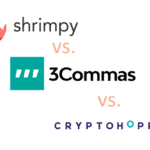Key Takeaways:
- The Federal Reserve to reduce its bond-buying program and expects to hike interest rates three times next year.
- Despite the threats posed by the epidemic, Fed Chair Jerome Powell said the US economy is growing at a “robust pace,” and he believes corporate and consumer spending will continue strong.

As the economy approaches full employment and the Federal Reserve deals with a jump in inflation, the Federal Reserve announced on Wednesday that it would terminate its pandemic-era bond purchases in March. Instead, it aims to pave the way for three quarter-point interest rate hikes by the end of 2022.
For one thing, the central bank announced that it would reduce its monthly bond purchases more quickly.
Starting in January, the Fed will buy $60 billion in bonds per month, half of what it was buying before the November taper and $30 billion less than it was buying in December. In November, Fed began tapering by $15 billion per month, doubled it in December, and continued until 2022.
“The economy no longer needs increasing amounts of policy support,”
Fed Chair Jerome Powell said at a news conference, contrasting the near-depression conditions at the start of the coronavirus pandemic in 2020 with today’s environment of rising prices and wages, as well as rapid job market improvement.

After that, the central bank intends to begin hiking interest rates, which were held constant at this week’s meeting, in late winter or early spring.
According to projections presented on Wednesday, the Federal Reserve expects three rate hikes in 2022, two the following year, and two more in 2024.
He said after the Fed’s latest two-day policy meeting that inflation is “uncomfortably high,” and that “in my view, we are making rapid progress toward maximum employment,” a set of circumstances that has persuaded all Fed officials, even the most dovish, that it is time to exit more fully the pandemic policies put in place two years ago.
Despite the spread of the Omicron variant, the central bank’s new policy statement and economic projections envision the pandemic giving way to a remarkably benign set of economic conditions – a “soft landing” in which inflation eases mainly on its own, interest rates rise slowly. The unemployment rate is held at a low of 3.5% for three years.
The actions by the Federal Open Market Committee, which were unanimously agreed, constitute a significant shift in policy, which had been the loosest in its 108-year existence. The impact of inflation was mentioned in the post-meeting statement.
According to the statement, “supply and demand imbalances related to the pandemic and the reopening of the economy have continued to contribute to elevated levels of inflation.”
The committee raised its inflation forecast for 2021 from 4.2% to 5.3% for all categories and from 3.7% to 4.4%, excluding food and energy. The forecast for 2022 is currently 2.6% for headline and 2.7% for core, higher than September.
At the same time, the unemployment rate for 2021 was reduced from 4.8 percent in September to 4.3%.
In addition, any mention of “transitory” inflation was dropped from the current policy statement, with the Fed instead recognizing that price hikes had exceeded its 2% target “for some time.”
Powell said at his press conference that consumers, the economy’s primary driver, are doing well.
“The consumer is really healthy fundamentally,” he said, “and we expect personal consumption expenditures to be pretty substantial in the current fourth quarter.”
In recent months, annual inflation has been more than double the Fed’s target.
The Fed might begin lowering its balance sheet at any time, either by selling securities outright or, more likely, by letting the proceeds of its current bond holdings drain down at a predetermined rate each month.









